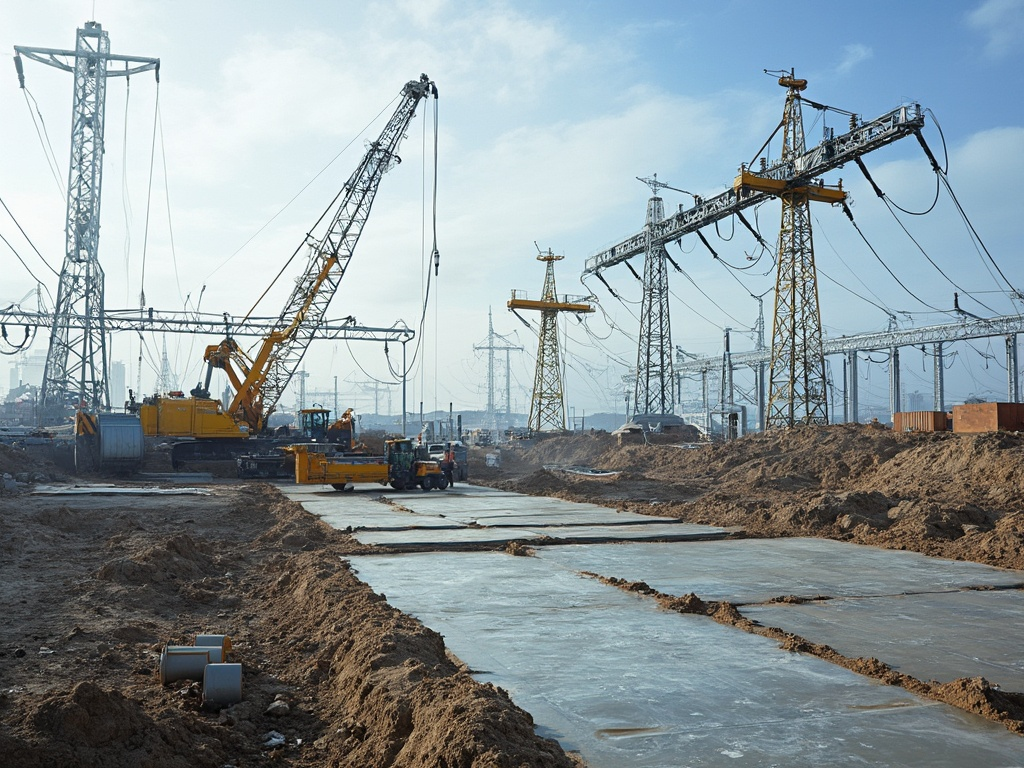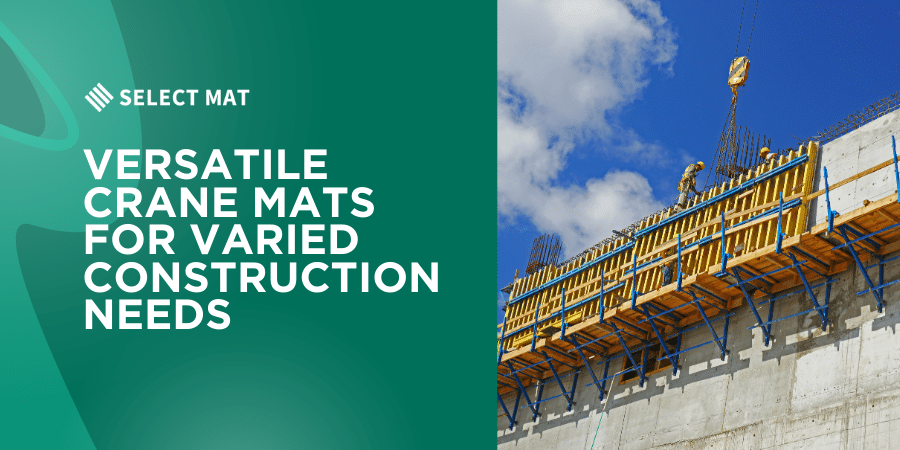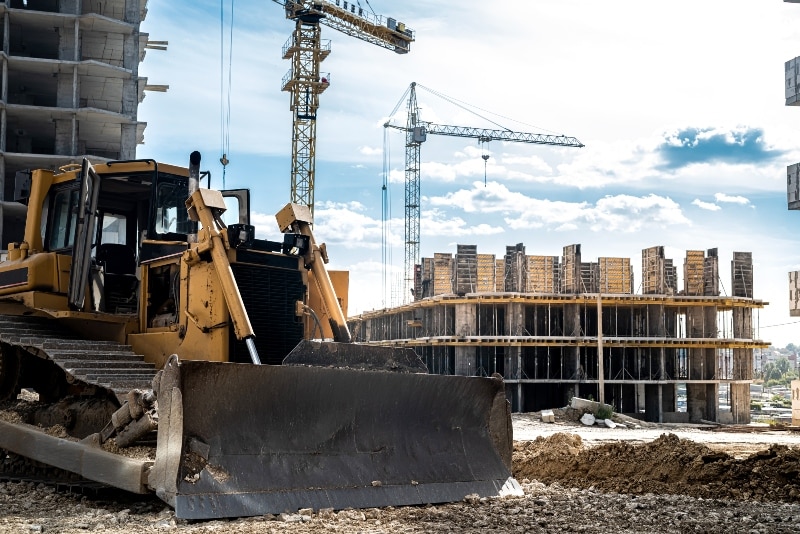The construction industry is in a state of continuous evolution, driven by technological advancements and an escalating demand for efficiency and safety. Central to the effectiveness of construction operations in electric power transmission and distribution (T&D) projects are construction mats. These invaluable resources have evolved significantly over the years, transforming from basic wooden board roads to advanced, high-performance solutions that enhance productivity while ensuring safety. Let’s explore the evolution of construction mats in T&D projects and how utilizing them can lead to long-term savings and operational efficiency.
The Early Days of Construction Mats
Historically, construction mats were simple, wooden planks used to provide temporary pathways and work areas for heavy machinery in various construction environments. These wooden mats were primarily designed to protect the ground from damage caused by heavy equipment. However, they came with limitations, including susceptibility to rot, limited weight-bearing capacity, and difficulties in maintenance. These mats would often splinter and lose boards, leading to costly clean up at the end of the project.
The Need for Change
As T&D projects expanded and equipment became heavier, the inadequacies of basic laminated wooden mats soon became apparent. The construction industry recognized the necessity for more robust, reliable solutions that could handle increased loads, mitigate environmental impact, and enhance safety on worksites. This led to a demand for construction mats that not only focused on ground protection but also contributed to increased operational efficiency.
The Evolution of Construction Mats
The evolution of construction mats has been marked by innovation and advancements in material science, resulting in diverse options tailored to specific application needs. Let’s delve deeper into how these mats have transformed over the years:
From Laminated Wood to Composite Materials
One of the most significant shifts in the industry has been the move from traditional laminated wooden mats to composite /synthetic alternatives. Composite mats, typically made from fully recyclable High-Density Polyethylene (HDPE), offer numerous benefits:
- Durability: Designed to resist environmental factors like moisture and UV exposure, composite mats do not rot or degrade like their wooden counterparts.
- Load-Bearing Capacity: Composite mats can handle significantly heavier loads than their laminated counterparts, making them ideal for modern T&D equipment.
- Ease of Transportation: Much lighter, composite mats offer a more efficient transportation solution compared to laminated wood mats. Each laminated wood mat has a surface area of 112 square feet and only accommodates approximately 20 mats per truckload (due to weight), totaling about 2,240 square feet. In contrast, lighter composite mats, with a usable surface area of 91 square feet, allow for 45 mats per truck, providing a total usable surface area per truckload of 4,095 square feet. Additionally, due to their weight and ease of maneuverability, composite mats enable faster deployment on job sites.
- Customized Solutions: Rental customers now have access to customizable matting solutions that cater to unique project demands. Whether you require extra-wide mats for stability on soft ground or specialized solutions for rough terrains, the options available ensure that every project can benefit from the ideal matting configuration.
Integration of Technology
Technology continues to play a pivotal role in the evolution of construction mats. Some of the advancements include:
- Trackability: Composite mats are moving into the future with integrated tracking capability through the use of passive RFID technology and even Global Positioning Systems (GPS).
- Weight Sensors: Smart mats equipped with sensors can monitor and provide real-time data on load distribution and ground stability. This technology enhances safety, allowing teams to take proactive measures and avoid accidents.
- Modular Designs: Contemporary mats often feature modular construction, enabling quick and easy installation while reducing time and labor costs on-site. This flexibility is crucial in fast-paced projects that require adaptability.
Cost-Efficiency Through Enhanced Safety
Investing in high-quality construction mats is not merely an upfront expense; it’s a strategic decision that yields greater savings down the line. Here’s how utilizing construction mats translates to substantial financial benefits:
Reducing Downtime
The resilience and efficiency of modern construction mats lead to fewer disruptions during T&D operations. By providing stable ground conditions, these mats enhance equipment performance and minimize the likelihood of machinery breakdown, ultimately reducing downtime costs associated with repairs and delays.
Enhancing Safety on the Jobsite
Safety is an invaluable asset in any construction project. The use of durable construction mats plays a crucial role in enhancing safety standards by providing stable work surfaces that minimize the risk of accidents caused by equipment tipping or sinking into unstable ground. Both laminated mats and composite mats do a commendable job at creating a stable work surface; however, composite mats take it a step further with their interlocking design, which creates a seamlessly smooth work surface. This design significantly reduces the Total Recordable Incident Rate (TRIR) associated with tripping hazards commonly found with laminated mats. As projects progress, the spaces between laminated mats can widen, leading to uneven surfaces and transitions that increase the risk of personnel tripping, rolling an ankle, or even suffering more severe injuries like fractures. In contrast, the seamless nature of composite mats promotes a safer work environment. Preventing workplace accidents not only has substantial long-term financial benefits, such as lower insurance costs, but also positively impacts workforce morale.
Efficient Resource Management
Utilizing construction mats streamlines resource management. Rental customers benefit from the wide variety of mats available from rental companies that can meet precise project specifications; thus, minimizing the need for heavy equipment mobilization or re-routing due to ground conditions. This efficiency leads to better allocation of resources, enabling projects to adhere to timelines and budgets.
Demonstrating Adaptability and Industry Knowledge
In an ever-changing marketplace, demonstrating adaptability and a solid understanding of industry trends is crucial for success. Here’s how incorporating advanced construction mats into your operations reflects your commitment to staying ahead of the curve:
Keeping Abreast with Market Innovations
By adopting the latest matting solutions, construction teams showcase their commitment to innovation. This proactive stance builds confidence with stakeholders, including clients and project partners, and underlines your dedication to maintaining high operational standards.
Responsiveness to Environmental Regulations
The construction industry is increasingly under scrutiny regarding its environmental impact. Using modern, eco-friendly construction mats conveys your awareness of sustainability practices and adherence to regulations. You demonstrate your adaptability by addressing contemporary environmental concerns, which resonate well with clients and regulatory bodies.
Leveraging Efficiency for Competitive Advantage
Embracing advanced matting solutions equips construction teams with the tools they need to operate more effectively. Projects that run smoothly due to proper ground support can deliver results ahead of schedule, granting a competitive advantage in a challenging market. This efficiency highlights your expertise and professionalism, positioning your company for future opportunities.
Practical Considerations for Selecting Construction Mats
As you embark on selecting the right construction mats for your T&D projects, consider the following practical aspects:
Assessing Project Requirements
Understanding your project specifications is crucial. Evaluate factors such as terrain conditions, load requirements, and equipment types. Collaborate with equipment rental provider to ensure that the mats you choose align perfectly with your operational needs.
Exploring Rental Options
Given the industry’s focus on efficiency and cost-saving, rental options for advanced construction mats are frequently the most viable choice for many projects. This approach allows you to adjust your inventory based on fluctuating project demands without incurring the costs associated with purchasing mats outright.
Partnering with Experienced Providers
Collaborating with reputable rental companies that specialize in construction mats can offer invaluable insights and support. Their expertise will aid your decision-making process, ensuring you select the most suitable matting solutions that align with current industry trends.
The Future of Construction Mats in T&D
As we look toward the future, the trajectory of construction mats continues to progress with advancements in technology and materials. We can expect:
Sustainable Developments
With increasing emphasis on sustainability, future matting solutions may focus on renewable materials and eco-friendly designs, further reducing the environmental footprint of construction operations.
Enhanced Smart Features
The emergence of smart construction mats may revolutionize project management through the integration of data analytics and monitoring technologies, helping teams optimize their operations and drive efficiency.
Expanded Customization
The demand for personalized matting solutions is likely to rise as projects become more specialized. Rental companies will increasingly offer adaptable mats tailored to specific requirements, enhancing the overall functionality of construction operations.
Conclusion
The evolution of construction mats in transmission and distribution projects signifies a remarkable journey from simple wooden structures to innovative, high-performance solutions. As rental customers in the construction industry, understanding the value of modern matting solutions is vital for enhancing operational efficiency, ensuring safety, and ultimately achieving significant cost savings.
By choosing the right construction mats, you can showcase your adaptability and commitment to industry best practices while ensuring that your projects run smoothly and effectively. Embrace this evolution and position your team for long-term success in the ever-changing landscape of the construction sector. Contact us today.




